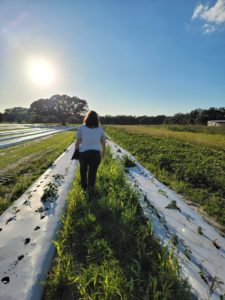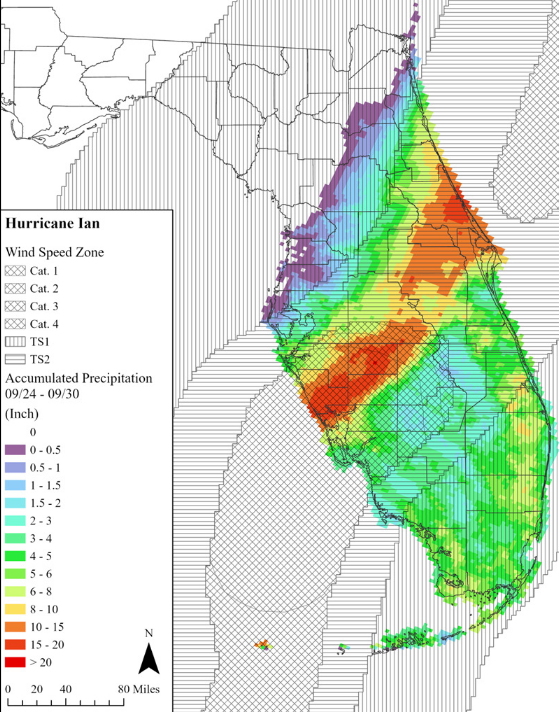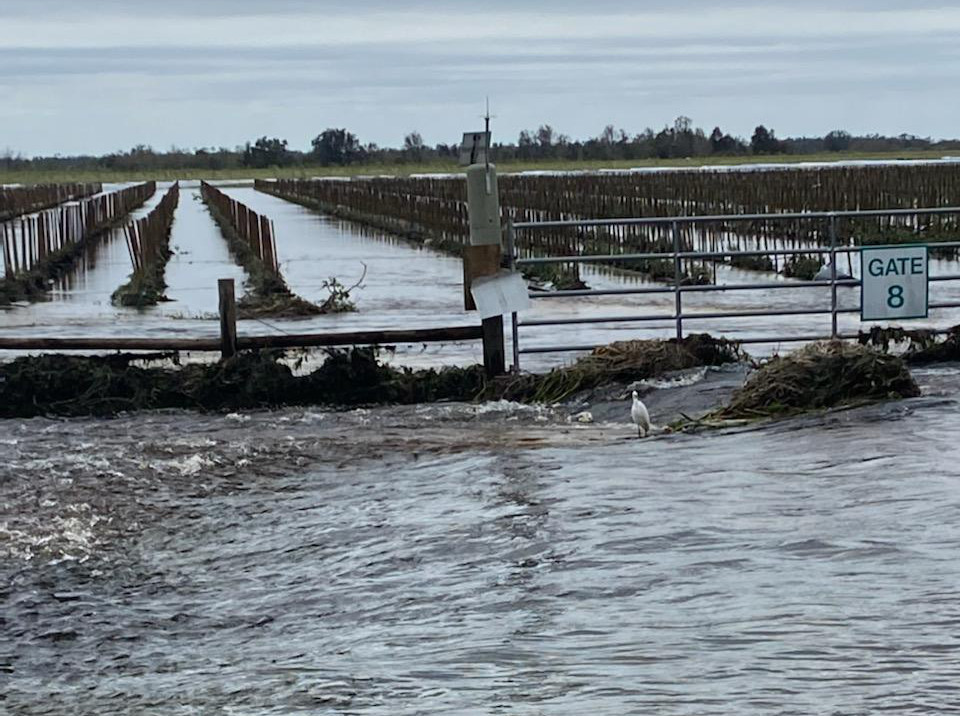Oct 19, 2022UF releases first Hurricane Ian damage estimates
Hurricane Ian’s winds and rains caused a $1.56 billion hit to more than 5 million acres of Florida agricultural land, including vegetables and melons, according to initial estimates from University of Florida (UF) Institute of Food and Agricultural Sciences (IFAS) economists.
Damages from seasonal crops such as fruits and vegetables, nursery, livestock as well as aquaculture products potentially lost from the Category 4 hurricane is expected to be valued between $787 million and $1.56 billion.
Vegetables and melons are expected to sustain significant production losses, with damages heavily dependent on the ability or inability to replant damaged or destroyed crops. Specialty crop damages include:
• Vegetables and melons: $208 million to $394 million,
• Non-citrus fruit and tree nuts: $78 million to $184 million, and
• Citrus: $147 million to $304 million.


The total value of all croplands that experienced tropical storm or hurricane conditions exceeds $8.1 billion. In estimated annual potential production loss by commodity group, citrus sustained 80% damage, non-citrus fruit and tree nuts, 55%, with vegetables and melons pegged at 35%.
UF economists, who released the estimates on Oct. 18, stress the numbers are preliminary and that damage assessments remains in the early stages. They noted that some crops, particularly fresh vegetables, are farmed in two growing seasons, with fall planting already underway at the time of Ian’s landfall.
“After speaking with producers and seeing the devastation of Hurricane Ian firsthand, I am saddened, but not surprised by the estimated cost of this storm,” Agriculture Commissioner Nikki Fried said in an Oct. 18 statement. “The impact on Florida’s affected commodities cannot be understated, especially the heartbreaking damage to Florida citrus, an industry already facing significant challenges. This assessment, along with our own internal evaluation, is the first step in the rebuilding process and my department will continue to work with state and federal partners to support our producers throughout the recovery process.”
Farm homes, farm buildings, greenhouse and nursery structures, machinery/equipment, fencing, irrigation systems and perennial plantings such as citrus trees and vineyards are among agricultural assets at risk for damage.
In addition to destructive winds, the storm characteristics, path and speed shaped Ian into a particularly “wet” storm that brought catastrophic storm surge, heavy precipitation and significant inland flooding. The seven-day accumulated precipitation showed more than 20 inches of rain fell in the areas near the center of the storm with amounts above 12 inches extending to the Atlantic Coast, the economists noted.
While heavy flooding prohibited full assessments of some fields, researchers collected some visual assessments that indicate potential larger impacts. “There’s still a lot of remaining uncertainty,” Christa Court, an assistant professor in the UF/IFAS’ food and resource economics department, said at an Oct. 19 news conference. “We don’t have good information on flooded areas, the depth of that flood and the duration of that flood on a lot of these agricultural lands. The impacts of that flooding on farming and branching operations are still uncertain, whether or not there will be impacts to yield or quality, that is not yet apparent.”
The estimates are published in “Preliminary Assessment of Agricultural Losses and Damages resulting from Hurricane Ian,” , from the UF/IFAS Economic Impact Analysis Program.


“We are hearing about a lot of agricultural production that was taking place outside of those most intense wind speed zones, but experienced flooding,” said- Court, who also heads UF’s Economic Impact Analysis Program. “I think the biggest one is the fall plantings for the fresh vegetables.”
The state’s interior bore some of the worst impacts of the storm, with strong winds and heavy rains battering a wide swath of the peninsula that includes more than 5 million acres of agricultural land, 60% of which is grazing land, Court said. Up to 700,000 acres of agricultural lands experienced Category 4 hurricane conditions with less intense hurricane conditions affecting an additional 500,000 acres.
The report excludes the value of stored inputs including fuel for farm equipment, fertilizer and other agricultural chemicals or stored harvested products that were damaged or destroyed in buildings, garages or sheds where stored. Several reports on minimal to significant infrastructure damage include falling trees or tree limbs harming structures, irrigation equipment and bee boxes. Perennial plantings are reported to suffer defoliation, limb damage and fallen trees and vines. Additionally, damages to or loss of plastic mulch that had been laid prior to the storm will require replacement.
UF plans to accurately and timely assess potential losses associated with Ian. “As assessments are still ongoing, it’s not possible to narrow the range further at this time or to provide estimates for specific crops or commodities,” Court said. The survey will remain open for an undefined amount of time.















